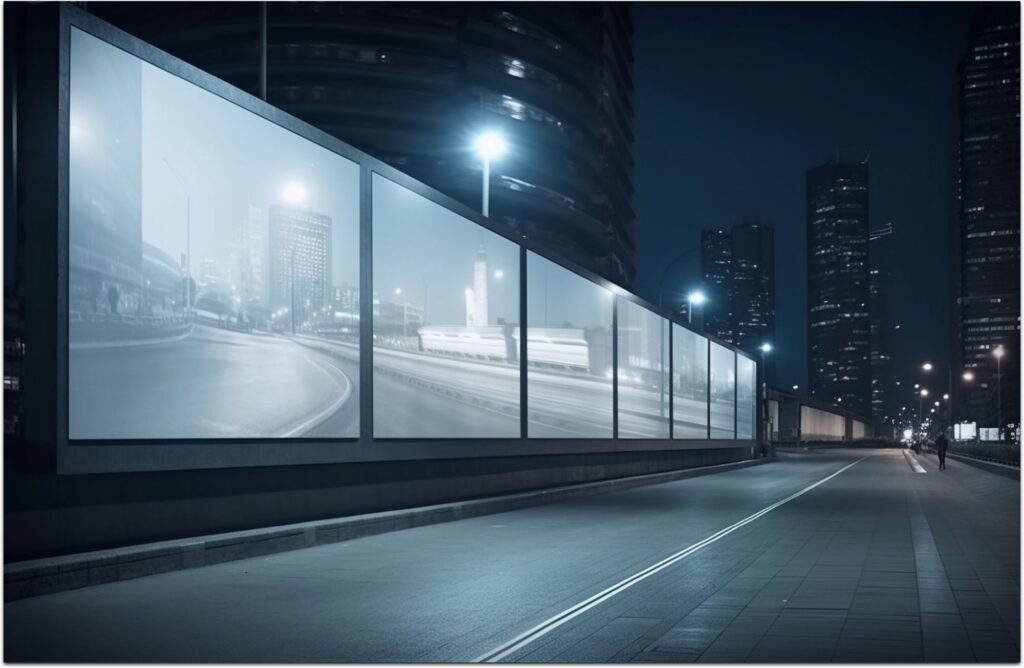
Examples of possible digital style billboard on Freeways.
Los Angeles County’s Transportation Agency (“Metro”) and the City’s proposed “Metro Transportation Communication Network” program calls for the construction of large digital billboards with changing messages on Los Angeles’ streets and freeways. Opponents of these digital billboards argue that the proposed program leads to significant visual pollution and threatens to distract drivers.
Dennis Hathaway, former President of L.A.’s Coalition to Ban Billboard Blight (now known as the Coalition for a Beautiful Los Angeles), recalls the many telephone calls he received from the founder of Hilton & Hyland, Jeff Hyland, as he traveled across town – calls reporting suspected illegal billboards. Jeff knew hundreds and possibly thousands of illegal signs in Los Angeles remained in place and would only be considered for removal upon a recorded complaint.
Jeff was also aware that Los Angeles had adopted a Sign Ordinance in 2002 designed to reign in billboard blight. The City’s 2002 legislation banned all new off-site billboards, except that new billboards would be allowed only within strictly regulated sign districts. The basis of the ban, as noted later by the Courts, was to reduce visual blight and improve community aesthetics and traffic safety.
Examples of possible digital style billboard on Freeways.
Since the 2002 Ordinance was adopted, efforts to strengthen it, as proposed by the Planning Department and recommended by the City Planning Commission, have stalled in the City Council’s Planning and Land Use Committee (PLUM). Recommendations to limit the locations of Sign Districts to land zoned for intense commercial uses increased mandatory takedowns of existing billboards when new signs are permitted, and fines that would serve as a deterrent to illegal activities have not been adopted.
Metro approved their “Transportation Communication Network” (TCN) program in January, which now requires L.A. City Council’s approval to proceed. The TCN is a digital billboard advertising program that proposes to install 86 large digital billboards across L.A. (60 freeway-facing and 26 non-freeway-facing changing digital signs) on 49 digital billboard structures (33 freeway-facing and 16 non-freeway-facing structures). Some of these structures will tower 50-95 feet over 10 freeways, others will be built adjacent to proposed residential developments, and others will shine into sensitive habitat areas like the Ballona Ecological Reserve. Metro cannot proceed with this program without the City’s adoption of enabling ordinances and approval. In exchange, the City will receive 50% of program proceeds after vendor share and program expenses are taken.
Example of possible digital style billboard at Metro stops.
According to a 2021 City Planning Report that summarized the legal challenges brought against the City’s Sign Ordinance:
“These cases show the limited latitude the City has in crafting its sign regulations, particularly when it comes to off-site signs. The courts have reinforced that exceptions to the ban must be rational and narrowly tailored. The City must be cognizant that with any new exception, the risk of the exception becoming the rule is real.”
—
On September 14, the City Planning Commission approved the TCN program and the proposed ordinances to enable its implementation with minor changes, all of which can be reversed by the City Council.
The proposed Metro TCN implementation ordinances are to be considered by the LA City Council’s PLUM Committee, followed by consideration by the full Council.
Those seeking action against the billboards can submit public comments opposing the proposed TCN digital advertising program directly to the City Council or key decision-makers, such as the PLUM Committee Members or the Mayor’s Infrastructure Deputy. Readers can also contact the Coalition for a Beautiful Los Angeles directly for more information: losangelesbeautiful@gmail.com.
Link to Planning Recommendation Report including the proposed City Ordinances.
